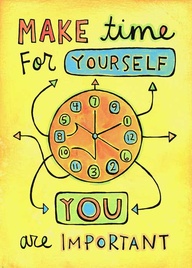
Death is that inevitable phenomenon that no one really cares to talk about, especially with your children. As we go through life death often pops up when we least expect it. This post is dedicated to resources to support your efforts in guiding your child through the tough process of death of a loved one.
Thoughts
Parenting While Grieving
How to help a grieving child
Grief Tip Sheets
Talking to Kids About Death and Grief: 10 Comprehensive Tips
The Grief Coaster: Understanding stress in grief
Journaling
Grief Activity Books for Kids 3-9
Activities
Here are some things you can do to help you express your feelings.
Activity 1: finish the sentences
Finish the following sentences.
The thing that makes me feel the saddest is …..
If I could talk to the person who died I would ask….
Since the death my family doesn’t….
My worst memory is….
If I could change things I would….
One thing that I liked to do with the person who died was…
When the person died I….
Since the death my friends….
After the death, school….
When I am alone….
Is there anyone you want to share this with?
Activity 2: drawing
Find a piece of paper and fold it in half. On one side, draw a picture of your family before the death. On the other side, draw a picture of your family after the death. You might want to share your picture with someone who would understand.
Source
Activities for Grieving Children
Sesame Street Materials-
- Storybook (2.1mb PDF)
Curl up with this printable book, starring your child’s favorite characters: Elmo and Jessie.
- Caring Cards (631kb PDF)
Have these cards on hand when you need a conversation starter, an activity idea, or just a little inspiration.
- Memory Chain (709kb PDF)
Connect all your favorite memories—our paper chain template shows you how.
Books
List of children’s books about death (PDF)
The Dougy Center Materials (Books and Pamphlets on Death, Dying, and Grief)
1. Lifetimes: The Beautiful Way to Explain Death to Children (kids 5+)
(kids 5+)
2.The Invisible String (kids 3+)
(kids 3+)
3. Everett Anderson’s Goodbye (Reading Rainbow) (kids 5-8)
(kids 5-8)
4. The Tenth Good Thing About Barney (kids 6-9)
(kids 6-9)
5. I’ll Always Love You (kids 3-7)
(kids 3-7)
6. When Dinosaurs Die: A Guide to Understanding Death (Dino Life Guides for Families) (kids 4-8)
(kids 4-8)
7. I Miss You: A First Look at Death (First Look at Books) (kids 4+)
(kids 4+)
8. The Saddest Time (kids 6-9)
(kids 6-9)
9. Tear Soup: A Recipe for Healing After Loss (kids 8+)
(kids 8+)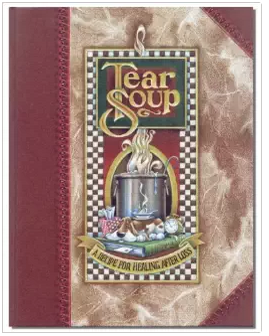
10. The Fall of Freddie the Leaf: A Story of Life for All Ages (kids 4+)
(kids 4+)
11. Gentle Willow: A Story for Children About Dying (kids 4+)
(kids 4+)
12. Where Are You? A Child’s Book About Loss (kids 4-8)
(kids 4-8)
13. Samantha Jane’s Missing Smile: A Story About Coping With the Loss of a Parent (kids 5+)
(kids 5+)
14. The Scar (kids5-9)
(kids5-9)
15. A Terrible Thing Happened (kids 4+)
(kids 4+)
16. The Elephant in the Room: A Childrens Book for Grief and Loss (kids 4+)
(kids 4+)
17. The Boy Who Didn’t Want to Be Sad (kids 4+)
(kids 4+) 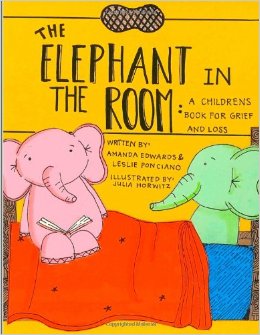
18. I Wish I Could Hold Your Hand…: A Child’s Guide to Grief and Loss (Little Imp Books) (kids 9+)
(kids 9+)
19. Water Bugs and Dragonflies: Explaining Death to Young Children (kids 4+)
(kids 4+)
20. When Your Grandparent Dies: A Child’s Guide to Good Grief (Elf-Help Books for Kids) (kids 5+)
(kids 5+)
21. Someone I Love Died (kids 4-8)
(kids 4-8)
22. What Happened When Grandma Died? (kids 4+)
(kids 4+)
23. Always and Forever (kids 4+)
(kids 4+)
24. Badger’s Parting Gifts (kids 4-8)
(kids 4-8)
25. Ghost Wings (kids 5+)
(kids 5+)
26. Finding Grandpa Everywhere: A Young Child Discovers Memories of a Grandparent (kids 7+)
(kids 7+)
27. The Grandpa Tree (kids 3+)
(kids 3+)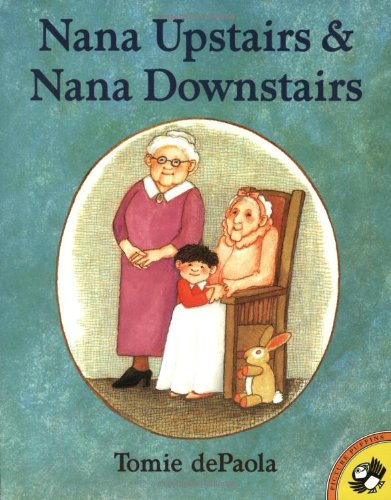
28. Sad Isn’t Bad: A Good-Grief Guidebook for Kids Dealing with Loss (Elf-Help Books for Kids) (kids 6+)
(kids 6+)
29. Nana Upstairs and Nana Downstairs (Picture Puffins) (kids 4-8)
(kids 4-8)
30. Daddy, Up and Down: Sisters Grieve the Loss of Their Daddy (kids 4-8)
(kids 4-8)
31. Saying Goodbye to Daddy (kids 4+)
(kids 4+)
32. The Angel with the Golden Glow: A Family’s Journey Through Loss and Healing (kids 4+)
(kids 4+)
33. Where’s Jess: For Children Who Have a Brother or Sister Die (kids 3-6)
(kids 3-6)
34. A Taste of Blackberries (kids 8-12)
(kids 8-12)
35. Bridge to Terabithia (kids 8-12)
(kids 8-12)
36. My Grandson Lew (kids 4-6)
(kids 4-6)
37. Aarvy Aardvark Finds Hope: A Read Aloud Story for People of All Ages About Loving and Losing, Friendship and Hope (as the title says, people of all ages!)
(as the title says, people of all ages!)
38. The Empty Place: A Child’s Guide Through Grief (Let’s Talk) (kids 5-10)
(kids 5-10)
39. Dancing on the Moon (kids 3+)
(kids 3+) 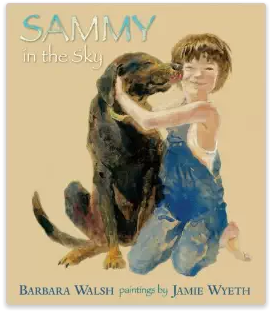
40. Lost and Found: Remembering a Sister (kids 6+)
(kids 6+)
41. Stacy Had a Little Sister (A Concept Book) (kids 4+)
(kids 4+)
42. Ragtail Remembers: A Story That Helps Children Understand Feelings of Grief (kids 4+)
(kids 4+)
43. Goodbye Mousie (kids 4-8)
(kids 4-8)
44. Remembering Crystal (kids 3+)
(kids 3+)
45. Rudi’s Pond (kids 5-8)
(kids 5-8)
46. The Memory String (kids 4-8)
(kids 4-8)
47. Sammy in the Sky (kids 4-8)
(kids 4-8)
48. Where Do People Go When They Die? (kids 3-8)
(kids 3-8)
49. Chester Raccoon and the Acorn Full of Memories (kids 3-8)
(kids 3-8)
50. Her Mother’s Face (kids 4-8)
(kids 4-8)
51. Remembering Mama (kids 4+)
(kids 4+) 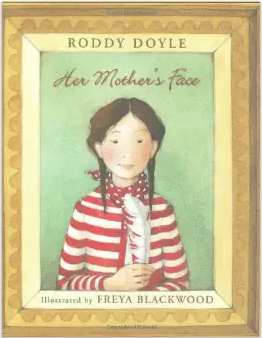
52. Old Pig (Picture Puffin) (kids 3-8)
(kids 3-8)
53. Pearl’s Marigolds for Grandpa (kids 3-7)
(kids 3-7)
54. Saying Goodbye to Lulu (kids 3-6)
(kids 3-6)
55. The Mountains of Tibet (kids 7+)
(kids 7+)
56. Rabbityness (kids 3-7)
(kids 3-7)
57. I Wish I Could Hold Your Hand…: A Child’s Guide to Grief and Loss (Little Imp Books) (kids 9+)
(kids 9+)
58. Can You Hear Me Smiling?: A Child Grieves a Sister (kids 8+)
(kids 8+)
59. The Copper Tree (kids 5-8)
(kids 5-8)
60. Everybody Feels Sad (kids 4+)
(kids 4+)
61. Grief is Like a Snowflake (kids 4+)
(kids 4+)
62. My Baby Big Sister: A Book for Children Born Subsequent to a Pregnancy Loss (kids 4-8)
(kids 4-8)
63. Ladder to the Moon (kids 4-8)
(kids 4-8)
64. Missing Mommy: A Book About Bereavement (kids 3-8).
(kids 3-8).
Source
Camp
Grief Camp
Camp Erin is the largest national bereavement program for youth grieving the death of a significant person in their lives.
Children and teens ages 6-17 attend a transformational weekend camp that combines traditional, fun camp activities with grief education and emotional support, free of charge for all families. Led by grief professionals and trained volunteers, Camp Erin provides a unique opportunity for youth to increase levels of hope, enhance self-esteem, and especially to learn that they are not alone.
Camp Erin is offered in every Major League Baseball city as well as additional locations across the U.S. and Canada. The Moyer Foundation partners with hospices and bereavement organizations to bring hope and healing to thousands of grieving children and teens each year
Organizations
National Alliance for Grieving Children (NAGC)
Family Lives On Foundation
School
When death impacts your school
Therapy Materials
Clinical Grief Activities for Working with Bereaved Children











